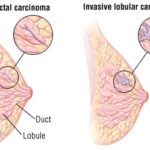1. Pembrolizumab plus chemotherapy for triple-negative breast cancer significantly increased PFS and OS among patients whose tumours expressed PD-L1 with a CPS of 10 or more.
2. Occurrence of adverse events of grades 3 or higher was similar among in both arms, with the most common ones being anemia, neutropenia, and fatigue.
Evidence Rating Level: 1 (Excellent)
Study Rundown: In a previous interim analysis, pembrolizumab (a programmed cell death 1 inhibitor) plus chemotherapy in metastatic triple-negative breast cancer had shown an increased progression-free survival (PFS) in patients with a PD-L1 combined positive score (CPS) of 10 or more [CPS was defined as the number of PD-L1 staining cells]. In its final analysis, this study then explored overall survival (OS). Patients were randomly assigned to receive pembrolizumab plus the physicians’ choice of chemotherapy or placebo and chemotherapy. Primary end points for this final analysis were OS among patients with a CPS score of 10 or more, OS among patients with a CPS score of 1 or more, and OS in the intention-to-treat population. In the CPS-10 subgroup, median OS was significantly longer in the combination arm, whereas in the CPS-1 subgroup, there was no significant difference in median OS between arms. The OS in the intention-to-treat population was similar in both arms. Objective response rate (ORR) was higher in the combination arm of each subgroup, with the largest difference between arms in the CPS-10 subgroup. Duration of response was also highest in this subgroup. Incidence of adverse events of grades 3 or higher occurred similarly in both arms. Most common adverse events of grades 3 or higher were anemia, neutropenia, and fatigue across both arms. Common immune-related events included endocrinopathies such as hypothyroidism with no new safety signals. Limitations to this study include variability in each physician’s choice of chemotherapy such as nab-paclitaxel vs. paclitaxel. Overall, addition of pembrolizumab to chemotherapy strengthens the evidence for this FDA-approved option as a viable treatment option for triple-negative breast cancer patients whose tumours expressed PD-L1 with a CPS of 10 or more.
Click to read the study in NEJM
Relevant Reading: Triple-negative breast cancer: adjuvant therapeutic options
In-Depth [randomized control trial]: This international phase III trial included a total of 847 patients with triple-negative breast cancer whose tumours expressed PD-L1 and a CPS, who were randomly assigned in a 2:1 ratio to receive pembrolizumab plus chemotherapy or placebo plus chemotherapy; 566 were in the combination arm and 281 in the chemotherapy arm. In the CPS-10 subgroup, median OS was 23.0 months and 16.1 months for the combination and chemotherapy arms, respectively (hazard ratio for death [HR], 0.73; 95% confidence interval [CI], 0.55 to 0.95; P=0.0185). In the CPS-1 subgroup, median OS was 17.6 months vs. 16.0 months (HR, 0.86; 95% CI, 0.72 to 1.04; P=0.1125. In the intention-to-treat population, the median OS was 17.2 months vs. 15.5 months (HR, 0.89; 95% CI, 0.76 to 1.05, [significance not tested]). In the CPS-10 subgroup, ORR was 52.7% for the combination arm and 40.8% for the chemotherapy arm. Adverse events of grades 3 or higher occurred in 68.1% of patients in the combination arm and in 66.9% of patients in the chemotherapy arm. Most common adverse events of grades 3 or higher were anemia (16.5% in combination group vs. 14.6% in chemotherapy group), neutropenia (29.7% vs. 29.9%), and fatigue (2.8% vs. 2.5%). Immune-related adverse events most commonly included thyroid dysfunction. Overall, the addition of pembrolizumab to chemotherapy for triple-negative breast cancer significantly increased PFS and OS among patients whose tumours expressed PD-L1 with a CPS of 10 or more.
Image: PD
©2022 2 Minute Medicine, Inc. All rights reserved. No works may be reproduced without expressed written consent from 2 Minute Medicine, Inc. Inquire about licensing here. No article should be construed as medical advice and is not intended as such by the authors or by 2 Minute Medicine, Inc.


